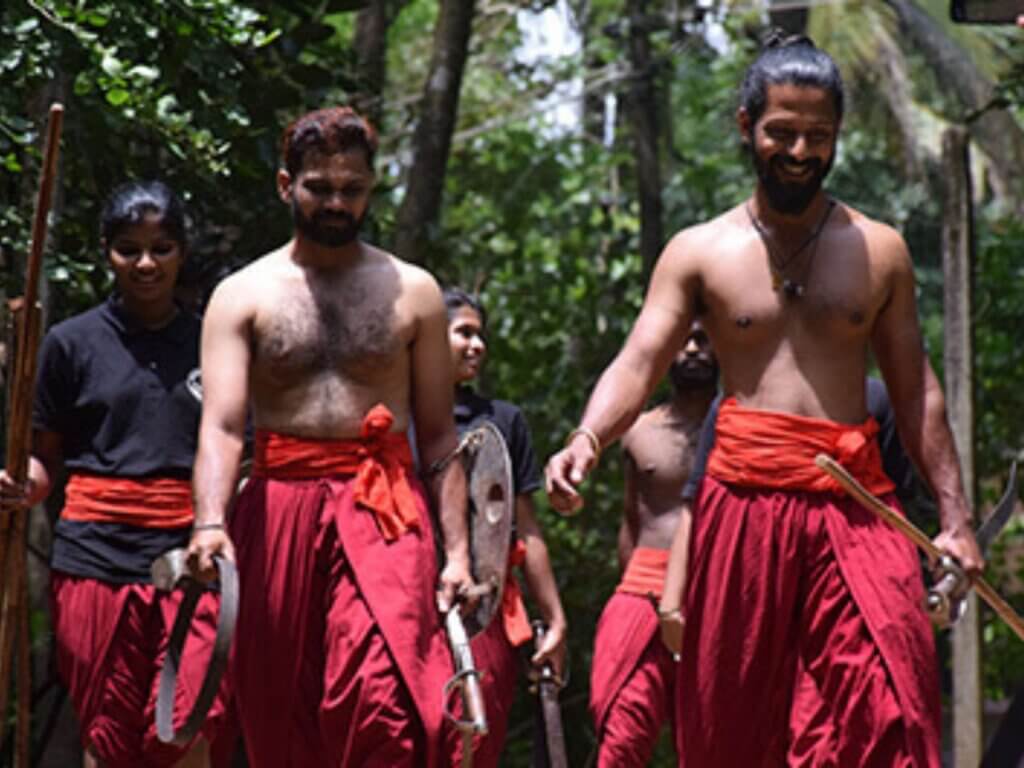In the ancient martial art of Kalaripayattu, every aspect carries a profound symbolism and significance, deeply rooted in tradition and spirituality. Among the many elements that adorn the training ground of a Kalari, Poothara stands as a prominent symbol, embodying spiritual essence and serving as a focal point for reverence and practice.
Understanding Poothara
At the southwestern corner of the training arena, a small, upwardly tapering structure catches the eye – Poothara. It stands as a testament to the rich spiritual heritage intertwined with the physical rigors of Kalaripayattu. Traditionally, Poothara comprises seven tiers, although variations exist with five or nine tiers. Symbolically, these tiers represent the seven chakras or energy centers believed to be present in the subtle body of humans. This alignment with the chakras underscores the holistic approach of Kalaripayattu, which encompasses physical training alongside spiritual development.
Poothara transcends its physical presence, serving as an altar for the worship of Goddess Bhadrakali, the patron deity of Kalaripayattu. Offerings of flowers and prayers are made, invoking divine blessings for strength, protection, and success in training and combat. While Goddess Bhadrakali occupies a central position in this ritual, other deities such as Shiva, Parvathy, Ganapathy, Ayyappa, or serpent deities may also receive reverence, reflecting the diverse spiritual tapestry of the practitioners.
Interestingly, not all Kalaris adhere to the tradition of Poothara. Some opt to do away with this structure altogether, reflecting the evolving practices and interpretations within the realm of Kalaripayattu. Despite these variations, the core essence of reverence and spiritual connection remains integral to the art.
Guruthara and Weaponry
Adjacent to Poothara lies another elevated spot known as Guruthara, where ancient, nameless masters of Kalaripayattu are venerated. This spot serves as a reminder of lineage and tradition, honoring the teachings passed down through generations.
Furthermore, the space between Poothara and the western main pillar holds significance as it is where the weapons used during training exercises are placed. This placement symbolizes respect for the tools of combat and underscores their role in honing skills and discipline.
Conclusion
Poothara encapsulates the spiritual ethos and cultural heritage of Kalaripayattu, embodying the fusion of physical prowess and metaphysical connection. It serves as a conduit for divine blessings, a symbol of reverence for tradition, and a focal point for the holistic development of practitioners. Whether adorned with seven, five, or nine tiers, Poothara remains a timeless emblem of the deep-rooted spirituality that permeates the ancient art of Kalaripayattu.
FAQs
Q: How is Poothara described physically?
A: It is described as a small, upwardly tapering structure.
Q: How many tiers does a traditional Poothara have?
A: Traditionally, Poothara comprises seven tiers.
Q: Are there variations in the number of tiers in Poothara?
A: Yes, variations exist with Poothara having five or nine tiers.
Q: What do the tiers of Poothara represent?
A: Symbolically, the tiers of Poothara represent the seven chakras or energy centers believed to be present in the subtle body of humans.
Q: How do practitioners interact with Poothara during training?
A: Practitioners may perform rituals involving Poothara, before the practice





